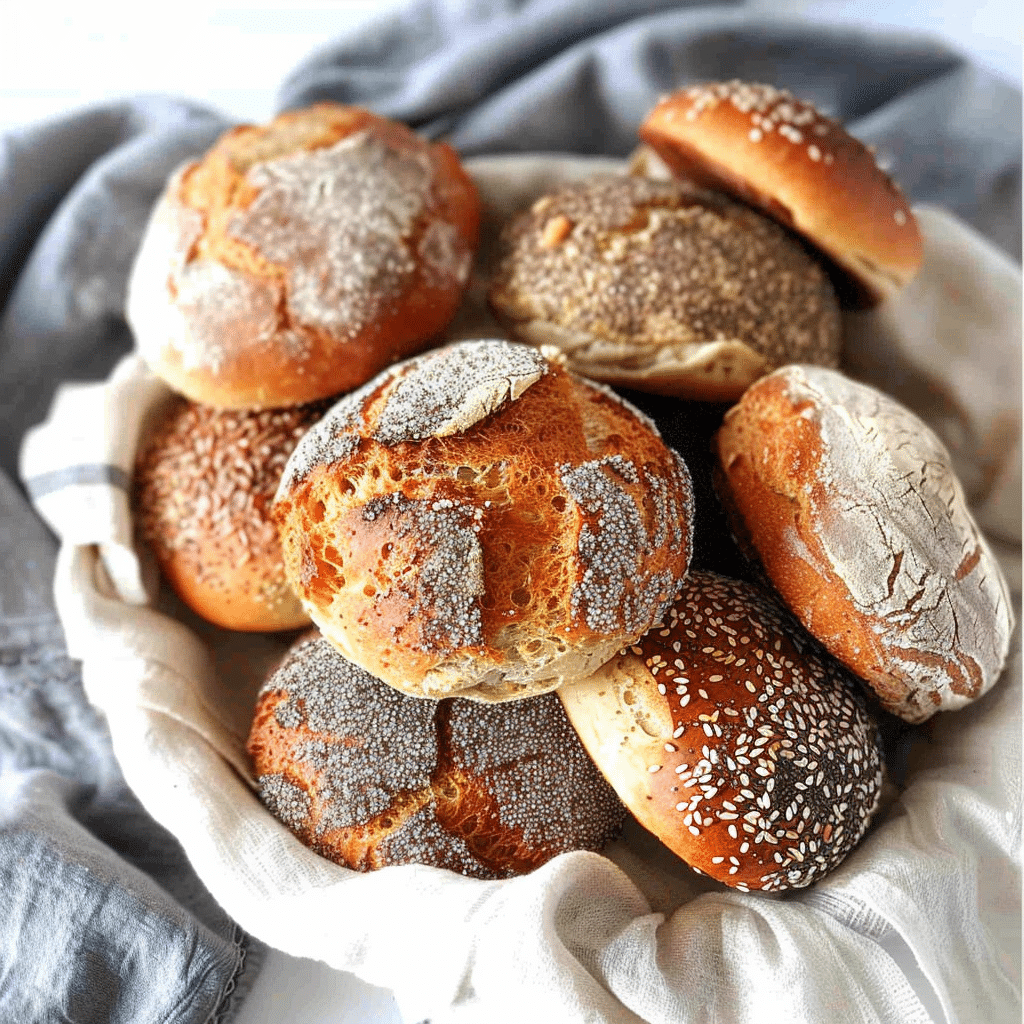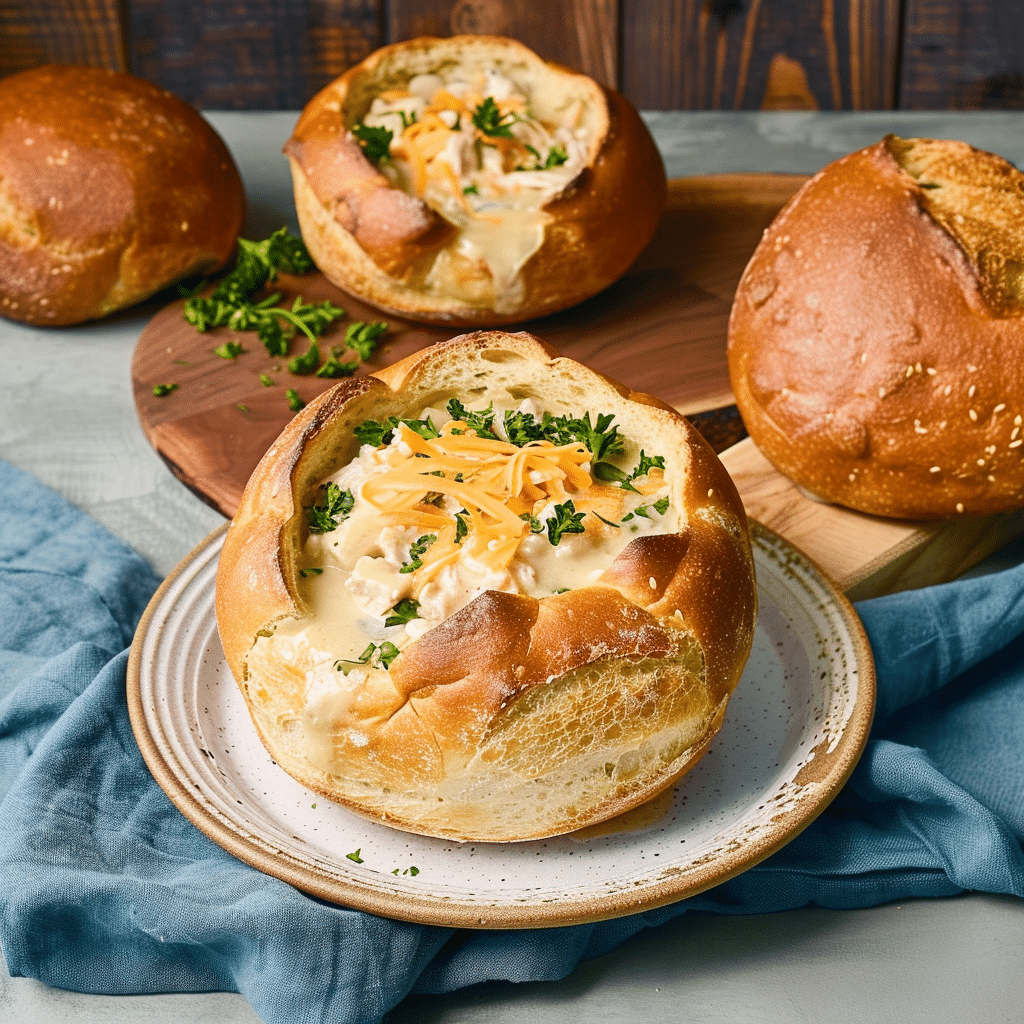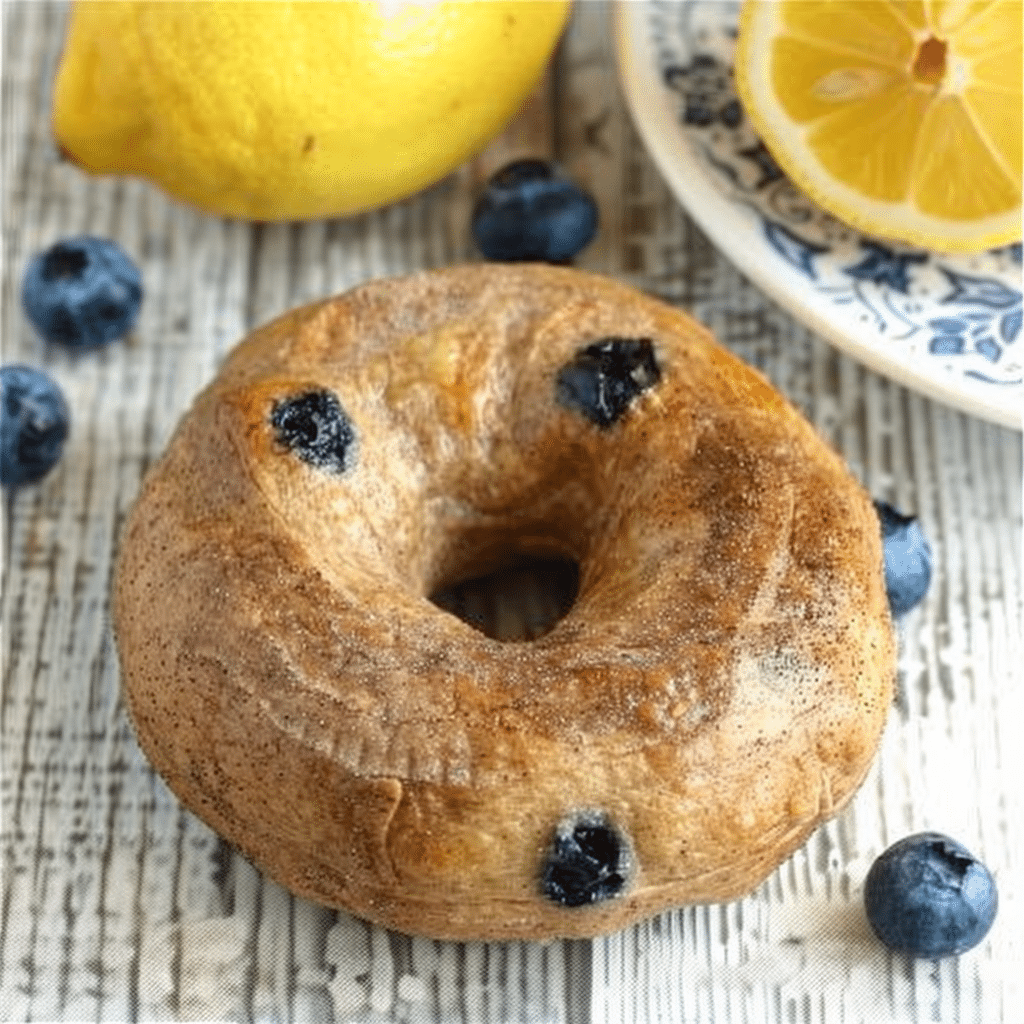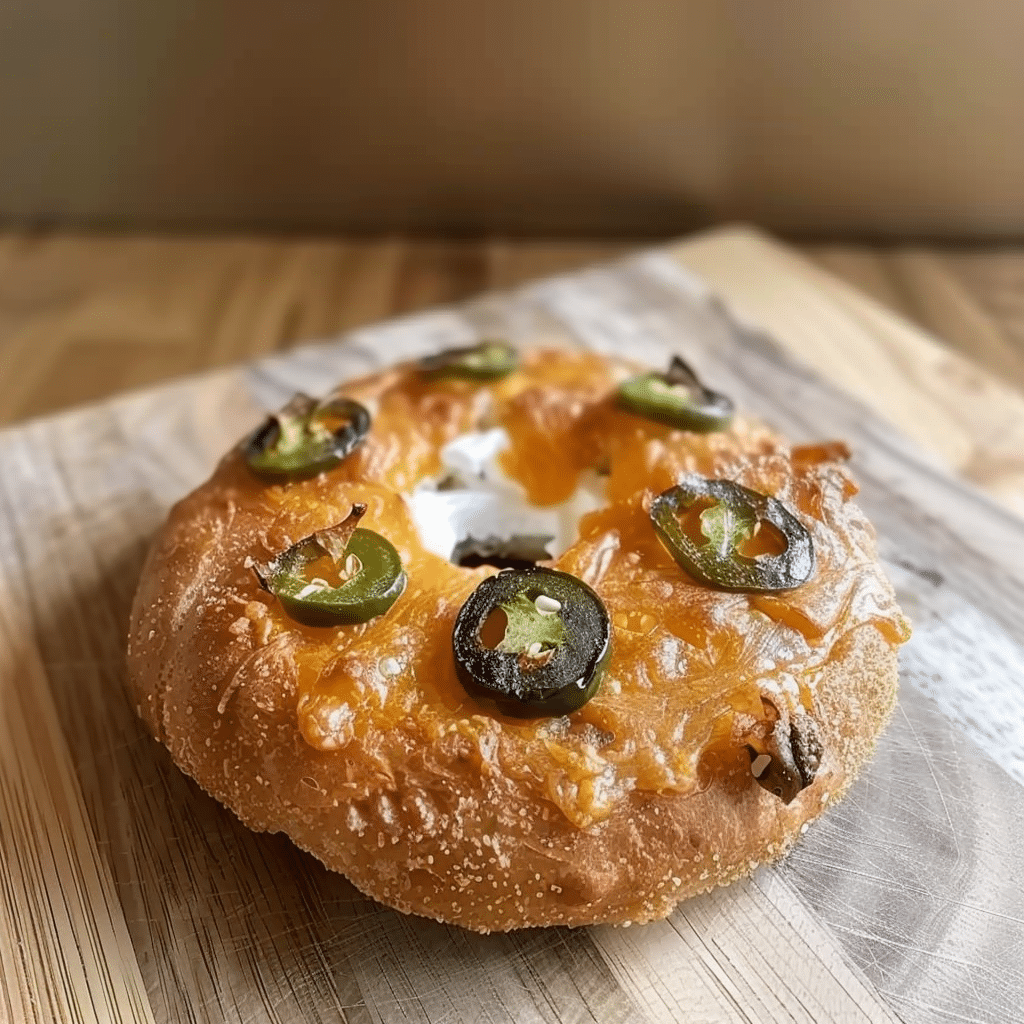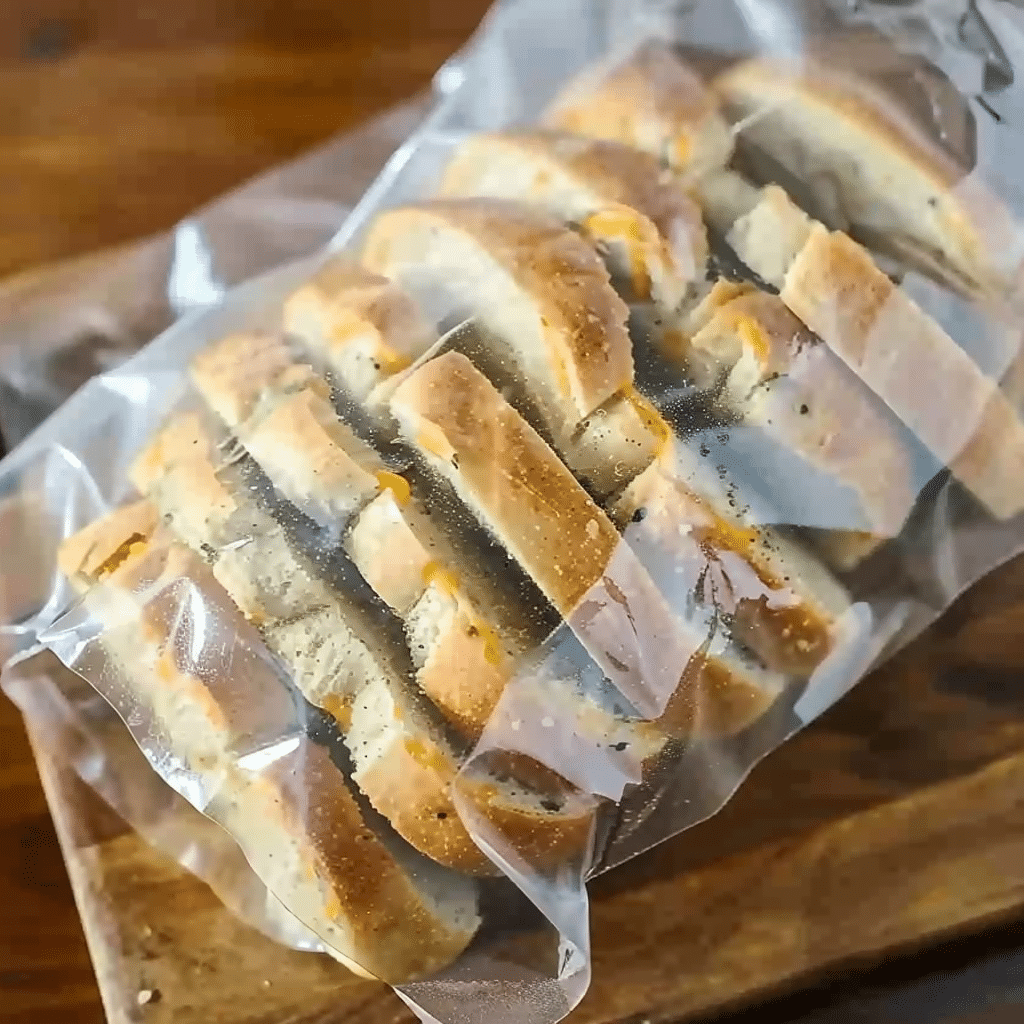Gluten-free sourdough bagels weren’t always on my list of feel-good comfort foods. Years ago, I tried making a batch that ended up dense and dry, and my daughter asked if they were “special bread rocks.” Not quite the joyful breakfast moment I had in mind. But everything changed when I leaned into the rhythm of sourdough and started using a mix of whole psyllium husk and discard from my gluten-free starter.
Now, gluten-free sourdough bagels are a weekly ritual in my home chewy, crusty, and full of tangy flavor you’d never guess came from a gluten-free recipe. They freeze beautifully, toast up like a dream, and are ready to support anything from avocado to homemade chia jam. In this article, I’ll walk you through exactly how to make them, no baking degree required. Whether you’re new to sourdough or just tired of disappointing store-bought options, these bagels will surprise you in the best way.
Table of Contents
Table of Contents
How to Make Gluten-Free Sourdough Bagels That Actually Taste Good
The Beauty of Gluten-Free Sourdough Bagels
For years, the phrase “gluten-free bagel” often meant a dense, dry puck that barely passed for breakfast.Yet, as soon as I ventured into gluten-free sourdough, everything transformed.
With a crunchy crust and a soft, chewy center, these gluten-free sourdough bagels are not only delicious but also satisfying. That complex tang from the sourdough starter makes all the difference.
The best part? They’re made with whole psyllium husk and a custom gluten-free flour blend, so they’re safe for those with gluten sensitivities while still offering that traditional bagel experience.
Here at Cook & Bless, I aim to share recipes that nourish both your body and soul. That’s why I appreciate how this recipe balances mindful ingredients like olive oil and whole grains, with the baking joy of a real handmade bagel. Plus, using your sourdough discard means there’s zero waste just delicious payoff.
Print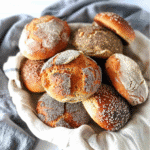
How to Make Gluten-Free Sourdough Bagels That Actually Taste Good That Actually Taste Good
- Total Time: PT5H25M
- Yield: 8 bagels
Description
These gluten-free sourdough bagels are chewy, golden, and packed with tangy sourdough flavor. Made with gluten-free flour and psyllium husk for structure.
Ingredients
330g lukewarm water
23g psyllium husk
20g olive oil
18g sugar (or honey or maple syrup)
200g gluten-free sourdough starter (or discard + 7g yeast)
350g gluten-free flour blend
10g salt
Water Bath:
6 cups water
1½ tbsp baking soda
Toppings:
Poppy seeds, sesame seeds, cheese, or dried onions (optional)
Instructions
1. Whisk water, psyllium husk, sugar, and oil. Let it gel.
2. Add the starter (or discard with yeast) to the gel. Mix well.
3. Add flour blend and salt. Mix until dough forms and pulls away from bowl.
4. Cover and let rise at room temperature: 2.5–3 hours (1 hour if using discard + yeast).
5. Divide into 8 balls, poke a hole in the center, and shape.
6. Let rise again, covered, for 1 hour. Preheat oven to 430°F (220°C).
7. Boil 6 cups water with baking soda. Boil each bagel 30 seconds per side.
8. Top with seeds or other toppings, place on parchment-lined tray.
9. Bake for 27–30 minutes or until golden and internal temp is 205°F.
10. Cool fully before slicing and serving.
Notes
– Use whole psyllium husk for best texture and structure.
– Let dough rest if sticky; psyllium thickens over time.
– For denser bagels, add 40g extra flour.
– Bagels turn purple? It’s from fine psyllium powder. Use whole husk to avoid this.
– Store in airtight container at room temp 2–3 days, fridge 5 days, or freeze 3 months.
- Prep Time: PT20M
- Cook Time: PT35M
- Category: Breakfast, Bread
- Method: Baking
- Cuisine: International
Why This Recipe Works for Beginners
You don’t need a stand mixer, fancy tools, or even years of sourdough experience to get this right. With the help of psyllium husk, which binds the dough beautifully, you’ll avoid the usual frustrations of crumbly gluten-free bakes. The water bath is what gives these bagels their signature chewy crust. Don’t skip it it’s the one step that truly makes them feel like a bakery treat.
If you’re just starting out on your sourdough journey, you might also find comfort in my gluten-free sourdough starter recipe which breaks it all down step by step. You’ll be amazed at how approachable it can be.
And if you’re looking for a gluten-free breakfast that’s as satisfying as it is gut-friendly, try pairing your bagels with my chia jam recipe it’s the perfect tangy-sweet contrast to the sourdough.
Why Gluten-Free Sourdough Bagels Are a Game-Changer
Key Ingredients & Baking with Discard: No Waste, Big Flavor
It’s incredibly fulfilling to take a tray of freshly baked, chewy gluten-free sourdough bagels out of the oven. If you’re nurturing a starter at home, you know how fast the discard adds up. Rather than throw it out, you can use that discard to create these delicious gluten-free sourdough bagels with just a little added yeast. They rise quickly, bake beautifully, and offer that same signature tang without the long wait.
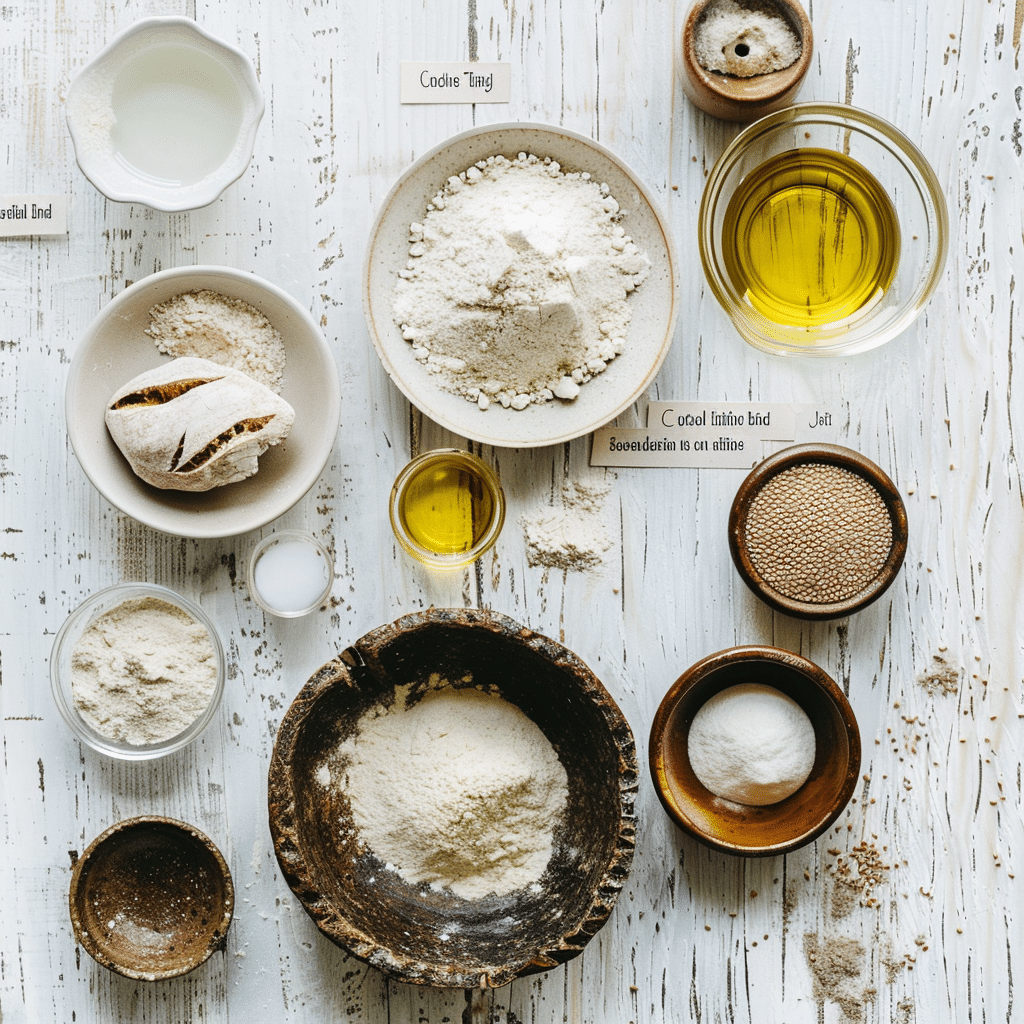
To prepare these gluten-free sourdough bagels, you’ll require the following ingredients:
- Gluten-free flour – A blend of brown rice flour, white rice flour, and starch (like potato, tapioca, or cornstarch)
- Psyllium husk – Crucial for maintaining structure and flexibility
- Sourdough starter or discard – Use a mature starter, or discard with 7g yeast added
- Olive oil – Adds softness and richness
- Sugar or honey – A little sweetener helps fermentation and flavor
- Salt – Balances and enhances the taste
- Water – Lukewarm, to activate the psyllium
- Baking soda – For the boiling step that forms the signature bagel crust
- Toppings – Sesame, poppy seeds, dried onions, or cheese are all great choices
I make gluten-free sourdough bagels weekly now, especially when I want something hearty, chewy, and nourishing without the gluten. They’ve become a kitchen staple in my home. These bagels check every box: easy to shape, rich in flavor, and perfect for freezing. Plus, it feels good to bake with zero waste and full flavor.
Texture Secrets for That Perfect Chew
One reason these gluten-free sourdough bagels stand out is texture. Thanks to psyllium husk, the dough holds its shape, stays elastic, and delivers that classic chew we all want. Want a denser bagel? Just add a bit more gluten-free flour or starch and shape it tighter.
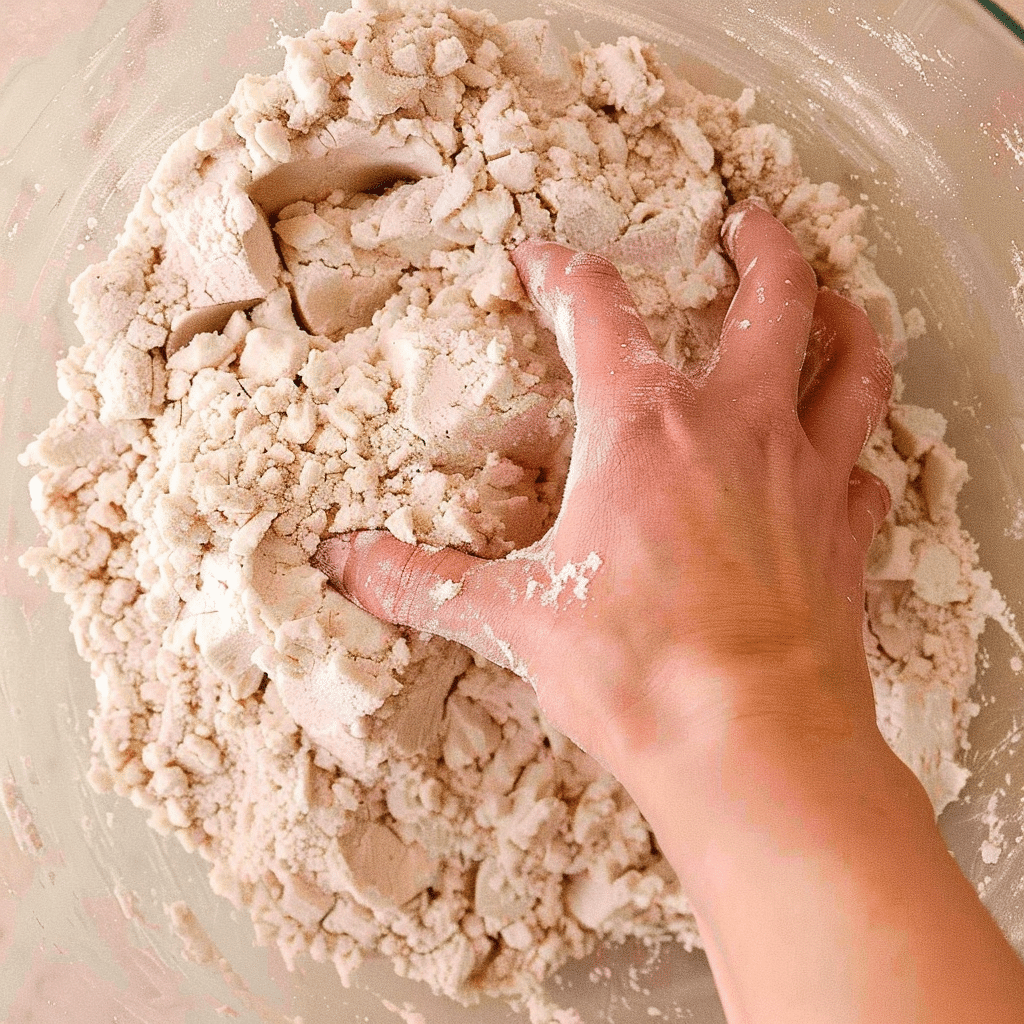
If you’re still figuring out your flour blends, check out my gluten-free baking tips where I share blends that work best for structure and flavor. And if you love toppings, these gluten-free sourdough bagels are the perfect canvas. I top mine with poppy seeds, sesame, or even garlic flakes. They’re also incredible paired with this simple tomato garlic spread for a savory twist.
Once you’ve made these gluten-free sourdough bagels, you’ll wonder why you ever bought store-bought again.
Mastering the Process: Shaping and Baking Gluten-Free Sourdough Bagels
Shape with Confidence, Even Without Gluten
When it comes to making gluten-free sourdough bagels, shaping might seem intimidating at first but it doesn’t have to be. The psyllium husk gives this dough a flexible, workable texture, letting you form bagels that hold their shape through boiling and baking.
I like to divide the dough into eight even pieces, roll each into a ball, and gently press a hole through the center with my finger. Don’t stress over perfection here these bagels are meant to look lovingly handmade.
One tip I’ve learned the hard way? Make the hole slightly larger than you think it needs to be. Gluten-free sourdough bagels will puff up quite a bit in the oven, and the hole can close up during baking if it’s too small.
Boiling and Baking: Where the Magic Happens
The distinctive crust of gluten-free sourdough bagels is achieved through boiling. Drop each shaped bagel into a pot of simmering water with baking soda for just 30 seconds per side.
This step helps set the outer crust before baking, giving that satisfying chew and helping toppings stick. I love using a mix of sesame and poppy seeds, but don’t be afraid to get creative with everything seasoning or dried onion flakes.
For baking, set your oven to 430°F and use a parchment-lined tray to avoid sticking. If you’ve ever had the bottoms burn, it might be your oven running too hot something I cover in detail in my kitchen troubleshooting tips. I also recommend checking the inner temp of your gluten-free sourdough bagels near the end; 205°F means they’re done.
Serve these fresh with homemade hummus or herb cream cheese for a nourishing meal that feels like a treat.
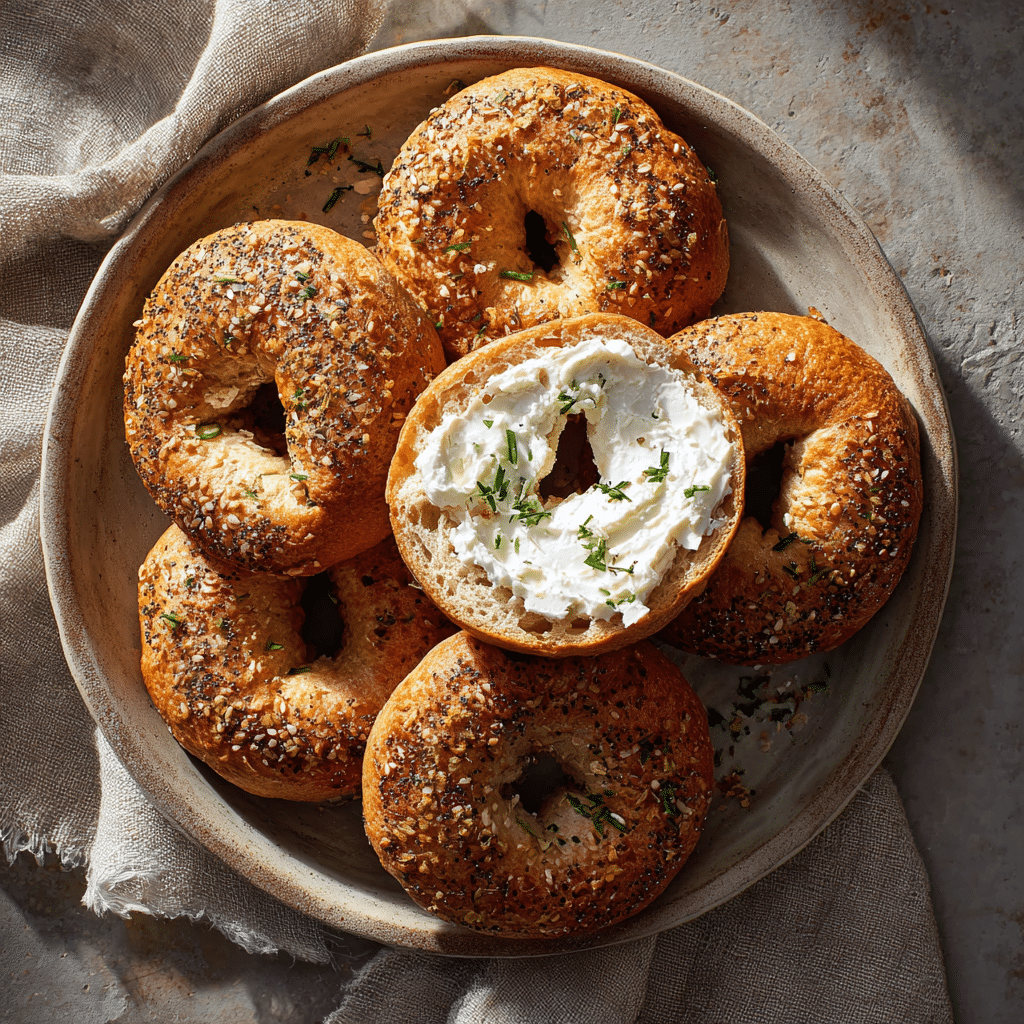
Once you’ve nailed the technique, gluten-free sourdough bagels become an easy weekly ritual and trust me, your mornings will thank you.
Storing, Customizing, and Troubleshooting Gluten-Free Sourdough Bagels
Keep Them Fresh: Storage Tips That Work
After baking a perfect batch of gluten-free sourdough bagels, you’ll want to make sure they last. Good news these bagels store wonderfully without losing texture. I let them cool completely, then keep them in an airtight container on the counter for up to three days. For longer storage, pop them in the fridge for up to five days, or freeze them in a zip-top bag for up to three months. Just toast straight from the freezer no thawing needed.
These gluten-free sourdough bagels are ideal for meal prepping. I often bake a double batch on the weekend and freeze half for busy mornings. If you want more gluten-free meal prep recipes that store well, check out my freezer-friendly breakfast collection.
Endless Possibilities: Make Them Yours
What I love most about gluten-free sourdough bagels is how customizable they are. Add fresh rosemary, shredded cheese, or cinnamon and raisins for flavor variety. You can even shape minis for snack-size bites. Just remember to adjust baking time by a few minutes if making smaller bagels.
These bagels also work beautifully as sandwich bread or burger buns. If you’re exploring gluten-free swaps across your meals, check out my recipe for soft gluten-free sandwich rolls to mix things up.
Before we wrap up, let’s clear up some of the most common questions I get about gluten-free sourdough bagels:
Conclusion: Your Go-To Recipe for Gluten-Free Sourdough Bagels
Making gluten-free sourdough bagels at home might seem like a big task, but once you try it, it becomes second nature. From using your starter discard to shaping each chewy round with care, this recipe is more than just a method it’s a way to nourish yourself and your family with intention. These bagels give you the texture you’ve been missing, the flexibility your schedule needs, and the joy of creating something from scratch.
Whether you’re new to sourdough or a seasoned home baker, these gluten-free sourdough bagels fit beautifully into any routine. They’re freezer-friendly, meal-prep approved, and endlessly customizable. And most importantly they taste like the real deal.
So go ahead. Make a batch, slice it open, and top it with something you love. When preparing and enjoying food feels this satisfying, it transcends being just a recipe it’s a ritual.
Frequently Asked Questions About Gluten-Free Sourdough Bagels
Is sourdough bread OK if you are gluten-free?
Only if it’s made with gluten-free flour and a gluten-free sourdough starter. Traditional sourdough still contains gluten.
Are sourdough bagels low in gluten?
Not unless they’re made entirely with gluten-free ingredients. Sourdough fermentation doesn’t remove all gluten, so always choose certified gluten-free recipes if you have a sensitivity.
Why do you need to boil bagels?
Boiling helps the exterior set before baking, creating that chewy crust and helping toppings stick. It’s what makes a bagel a bagel.
Why did my bagels burn on the bottom?
It’s often an oven issue too hot or uneven heat. Use an oven thermometer and bake on the middle rack with parchment paper to avoid direct pan contact.
For more recipes follow me on : pinterest and medium
If you’re craving a bold flavor twist next, don’t miss my jalapeño cheddar sourdough bagels they’re spicy, cheesy, and just as wonderfully gluten-free.
Looking for other homemade sourdough creations? Visit our full guide to five amazing sourdough bagel flavors something for every dietary need.

